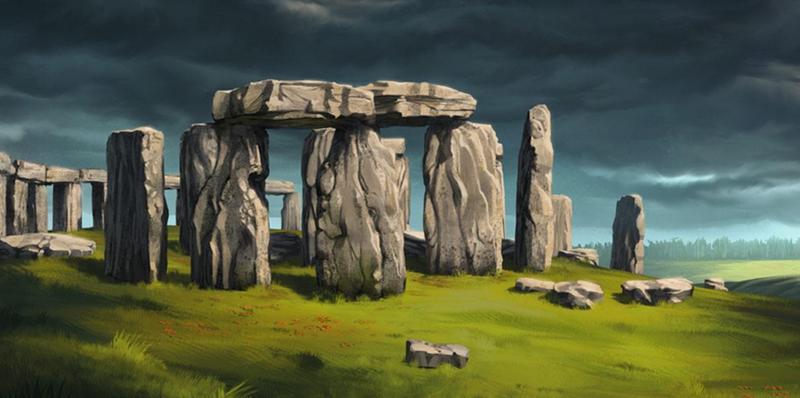Archaeologists unearth huge Neolithic ‘Stonehenge’
Archaeologists unearth huge Neolithic ‘Stonehenge’
Another ‘Stone Henge’ even bigger than the world famous heritage site and dating back nearly 5,500 years has been discovered by archaeologists.
First hint of the Neolithic site was unearthed three years ago during construction for Crossrail in East London, it emerged this week.
Large stone monoliths were detected using latest geophysics radar that can penetrate the ground and soil-testing in a survey in 2013 around Victoria Park, between Old Ford and Wells Street Common.
The survey was for a possible tunnel linking Crossrail with the Overground’s North London Line at Hackney Wick, following an old abandoned Victorian railway branch to Old Ford and the Millwall Docks. The tunnel, in the event, has never gone ahead.
The findings were kept under wraps for fear of souvenir hunters digging up Vicky Park looking for prehistoric artefacts.
But now the archaeologists from the Ludwig Boltzmann Institute have announced what could be one of the biggest ancient Neolithic sacred sites in the world—‘Wells Henge’, similar to Stonehenge and the Avebury Circle both in Wiltshire, but far grander, measuring at least half-a-mile across.
“This has been under our noses for many centuries,” Prof Vince Gafney said. “We’re looking at one of the largest stone monuments in Europe and don’t think there’s anything like this anywhere in the world. This is completely new and the scale is extraordinary.”
The 20ft and 30ft monolithic stones are thought to have been laid out at least 5,500 years ago, experts believe, and have been buried under what is now Vicky Park for the last 3,000 years. The top of the stones are just 6ft below the grassy surface.
But the first hint of something under the ground came more than 170 years ago, researchers at the Metropolitan Archives have found, when Victoria Park was being laid out in the early 1840s as a new open space for East London. The top of one obelisk was accidentally unearthed with a pickaxe by the Victorian workers—but astonishingly dismissed as old pre-Reformation ruins of a medieval convent and hurriedly covered over again.
Archive records at the time put it down to rubble dumped out on the Hackney Marshes when St Katharine’s Docks were being built next to the Tower of London in 1825, on the site of St Katharine’s Monastery.
Now experts are convinced that what was dismissed as medieval rubble has, instead, turned out to be ‘Wells Henge’, one of the most important Neolithic finds anywhere in the world.
The circle fell into decline long before Roman times. The 90 monoliths now detected had remained undiscovered for thousands of years.
Experts from the British Science Association believe the stone monoliths could be 2,500 years older than Stonehenge, according to latest carbon dating methods.
They have even found traces of Neolithic DNA which could eventually reveal what diet ancient Britons fed on and the ailments they must have suffered.
Aprel Phurst, a Science Association spokeswoman, said: “We know they were meat-eaters by the butchered animal bone remains that have also been unearthed.
“But there are also fragmented vegetation DNA going back even further, around 10,000 years ago, indicating a more advanced farming society.
“This would have stretched from the Lea Valley eastward to what we call ‘Dogger Land’, the vast estuary lowlands that eventually flooded by the rise of the North Sea during the Ice Age melt-down, with just the submerged Dogger Bank remaining as evidence today.”
The huge circle is reckoned to be four times the size of Stonehenge and with at least one processional avenue heading from the west from what is now Wells Street Common.
The name ‘Wells’, in fact, is on record back to the Iron Age, thought to be a reference to underground streams fed from the holy waters of the Lea River used by the Druids. Neolithic culture lasted several thousand years through the Stone Age to the Iron Age, culminating in great works like Wells Henge, with its procession avenues—one detected from Wells Street Common to the west, another suspected leading east towards to the Lea and possibly following the riverbank southward through Bow and Poplar to the Thames at Bow Creek.
Philip Ball/BBC
Be the first to post a message!
